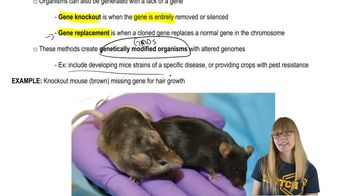Textbook Question
The SOS repair genes in E. coli (discussed in Chapter 15) are negatively regulated by the lexA gene product, called the LexA repressor. When a cell's DNA sustains extensive damage, the LexA repressor is inactivated by the recA gene product (RecA), and transcription of the SOS genes is increased dramatically.
One of the SOS genes is the uvrA gene. You are a student studying the function of the uvrA gene product in DNA repair. You isolate a mutant strain that shows constitutive expression of the UvrA protein. Naming this mutant strain uvrAᶜ, you construct the diagram shown above in the right-hand column showing the lexA and uvrA operons:
Outline a series of genetic experiments that would use partial diploid strains to determine which of the two possible mutations you have isolated.
500
views




